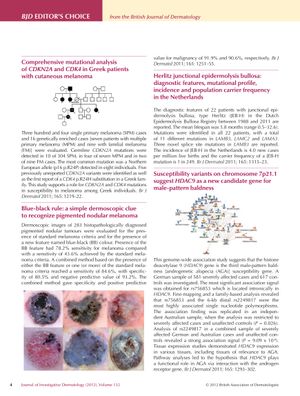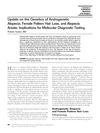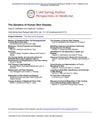BJD Editor's Choice: Genetic Mutations in Greek Melanoma Patients, Dermoscopic Features of Pigmented Nodular Tumors, Herlitz Junctional Epidermolysis Bullosa in the Netherlands, and HDAC9 in Male-Pattern Baldness
January 2012
in “
Journal of Investigative Dermatology
”

TLDR Some Greek melanoma patients have gene mutations linked to increased cancer risk, a new color feature helps diagnose melanoma, the incidence of a skin condition in the Netherlands is rare, and a gene possibly affects male-pattern baldness.
In a study of Greek patients with cutaneous melanoma, mutations in the CDKN2A and CDK4 genes were analyzed among 304 single primary melanoma (SPM) cases, 7 multiple primary melanoma (MPM) cases, and 9 familial melanoma (FM) cases. CDKN2A mutations were found in 10 SPM cases, 4 MPM cases, and 2 FM cases, with the most common mutation being a Northern European allele (p16 p.R24P). Additionally, 5 previously unreported CDKN2A variants and the first report of a CDK4 p.R24H substitution in a Greek family were identified, supporting the role of these mutations in melanoma susceptibility among Greeks. A separate study evaluated 283 pigmented nodular tumors using dermoscopic images and introduced a new feature named blue-black (BB) color, which had a 78.2% sensitivity for melanoma, higher than the 43.6% sensitivity of standard criteria. A combined method using BB feature or standard criteria increased sensitivity to 84.6%. In the Netherlands, the diagnostic features, mutational profile, incidence, and population carrier frequency of Herlitz junctional epidermolysis bullosa (JEB-H) were reported, with an incidence of 4.0 new cases per million live births and a carrier frequency of 1 in 249. Lastly, a genome-wide association study suggested HDAC9 as a new candidate gene for male-pattern baldness, with significant association signals found in a German sample of 581 cases and 617 controls, and replicated in an Australian sample, indicating a potential functional role in androgenetic alopecia.





